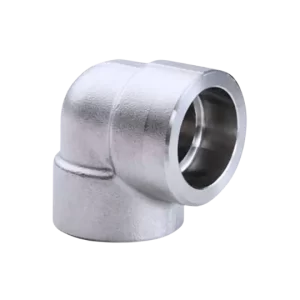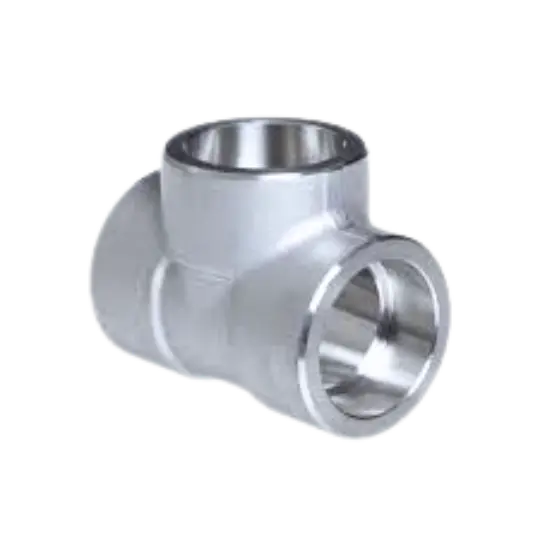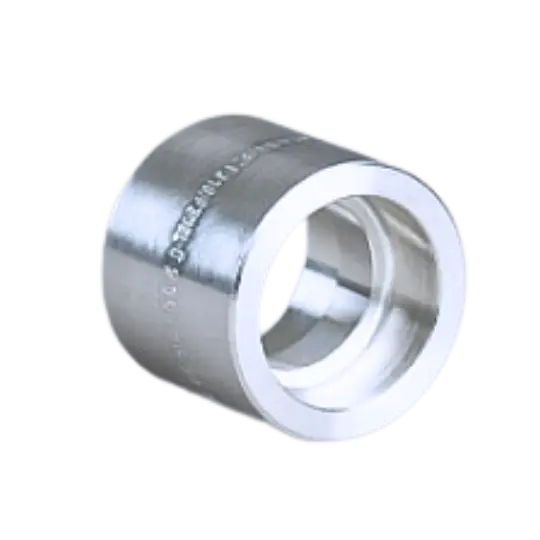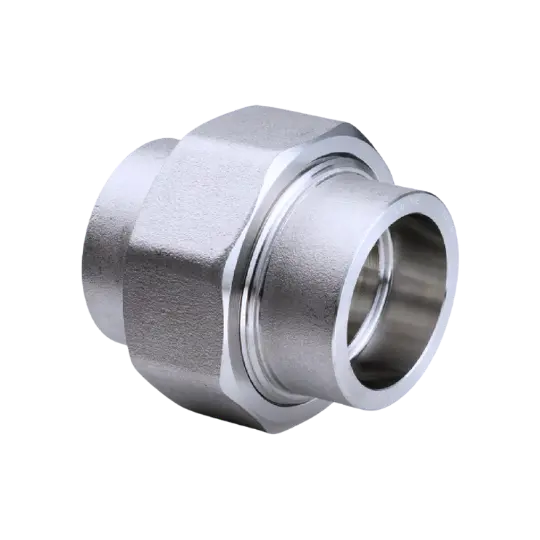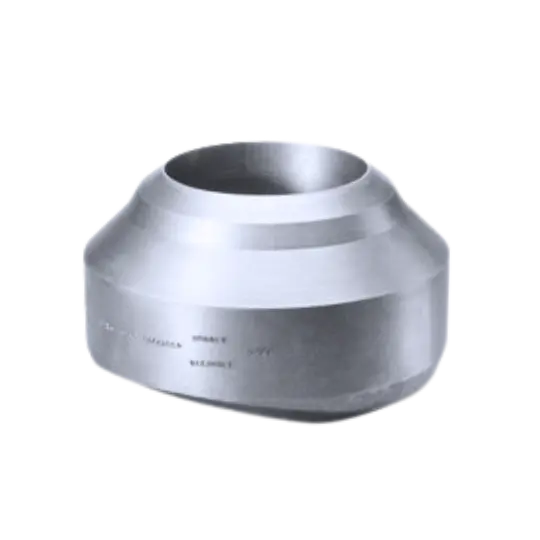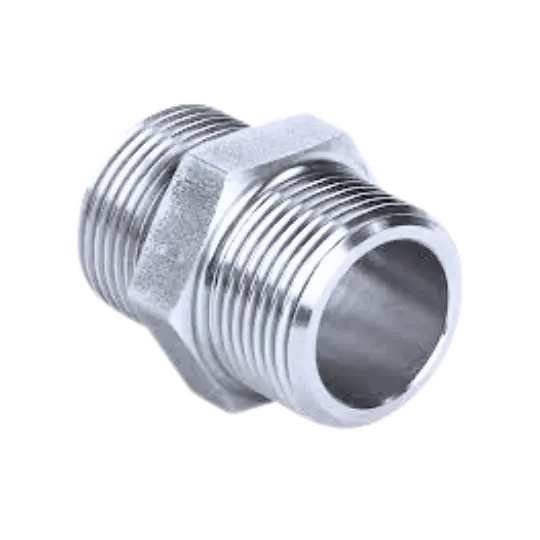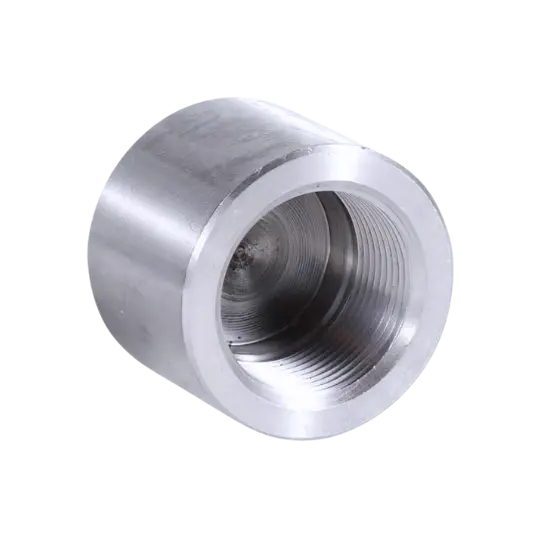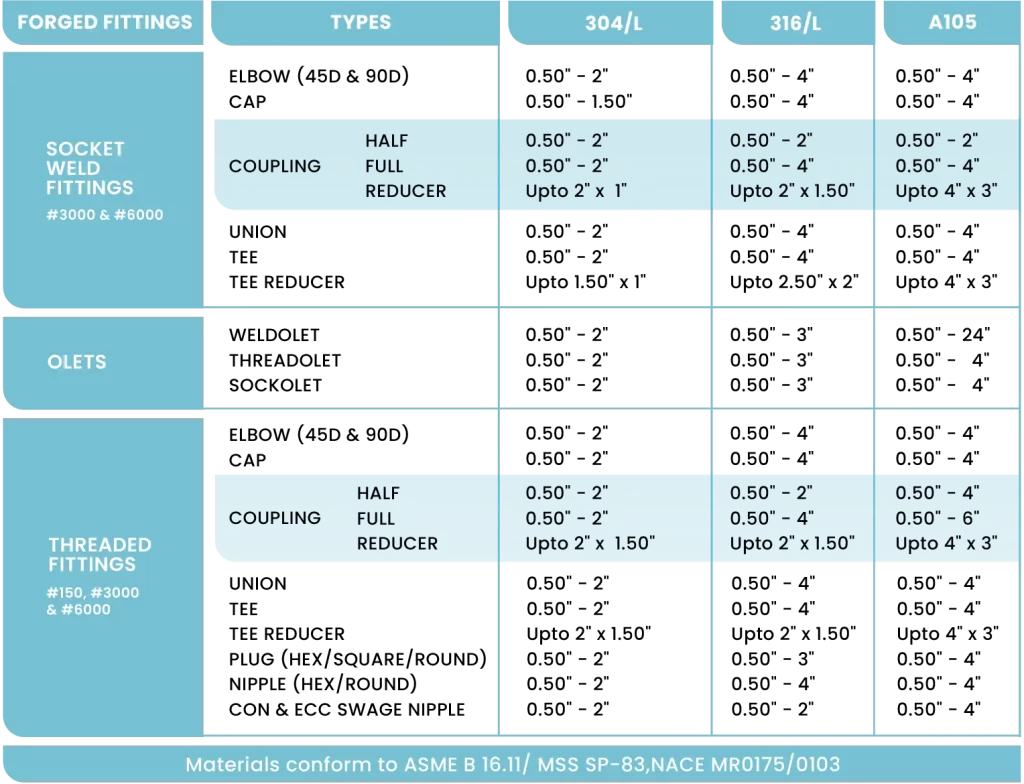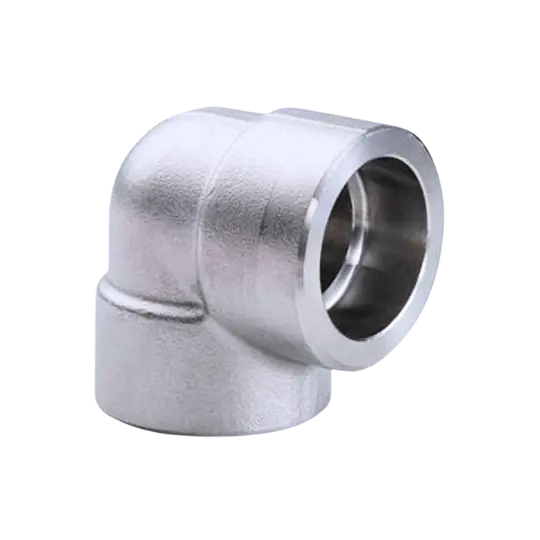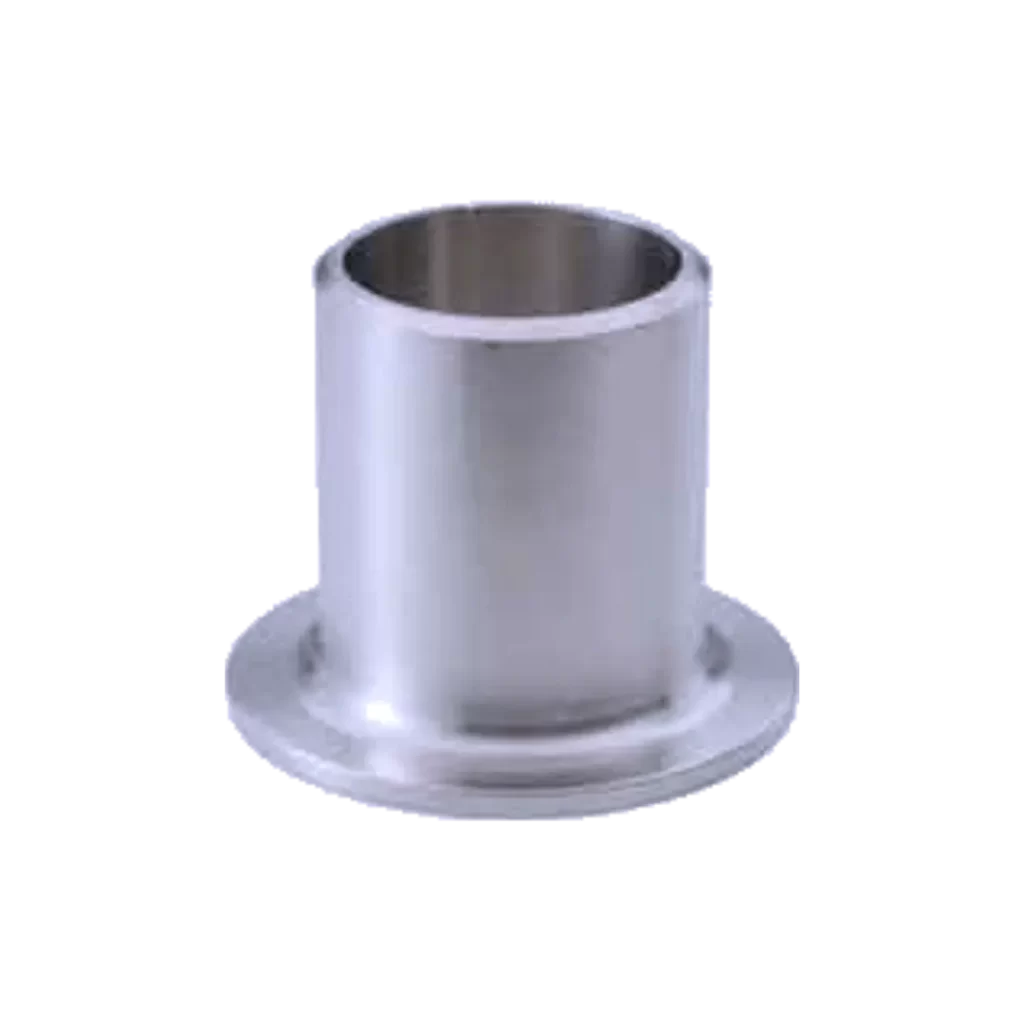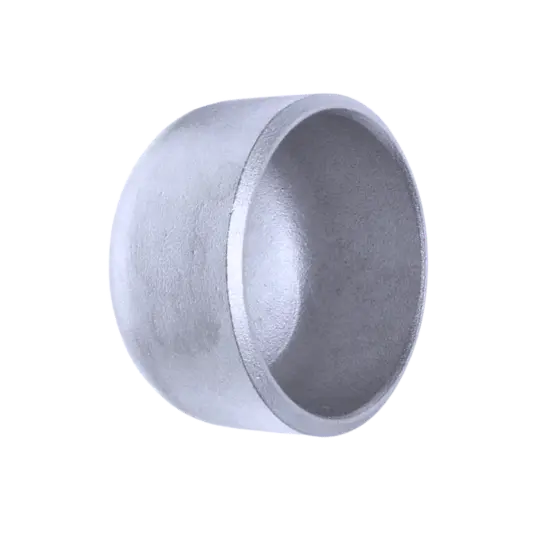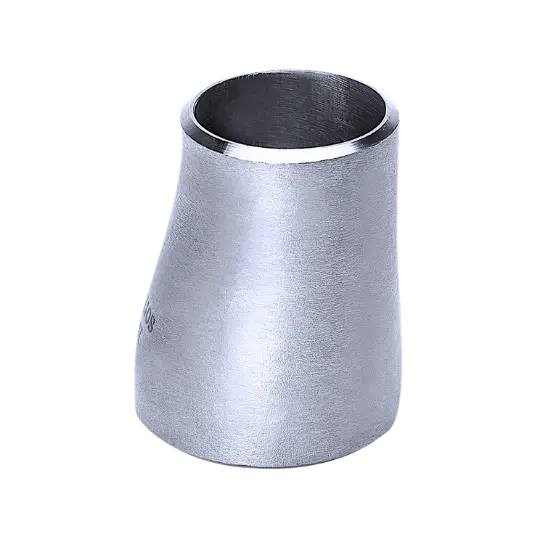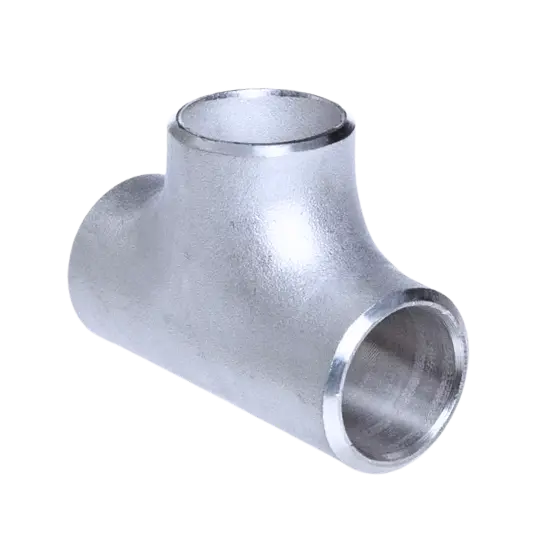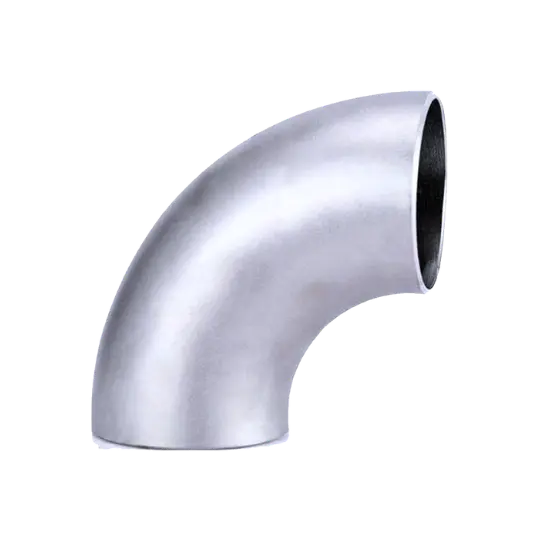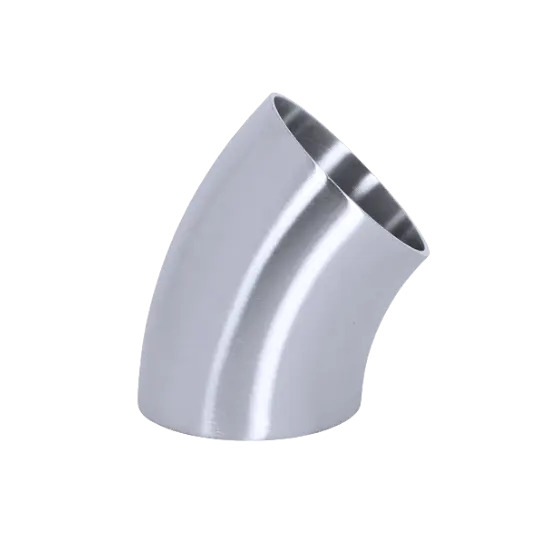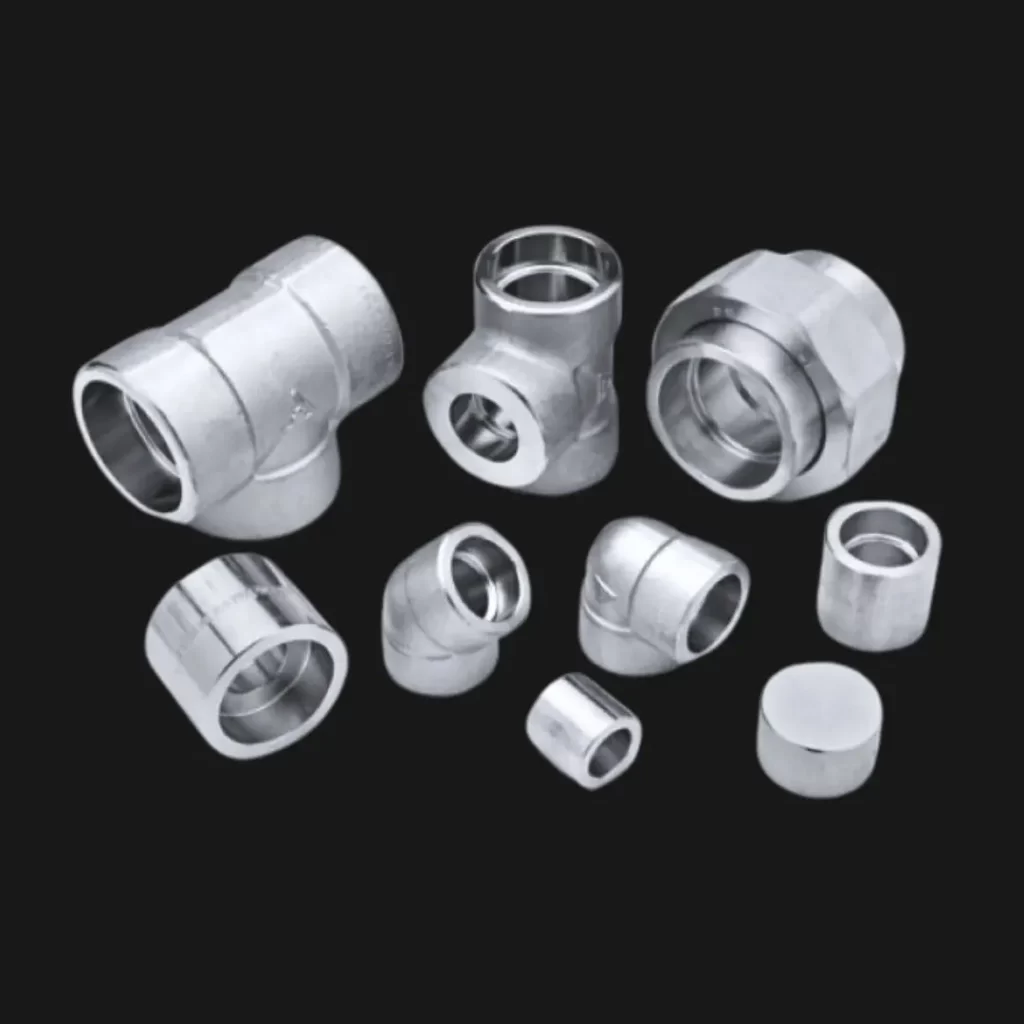
Forged Fittings.
What Are Forged Fittings?
Forged fittings are high-strength pipe fittings manufactured through a forging process that enhances their durability and mechanical properties. They are widely used in piping systems for high-pressure and high-temperature applications. Forged fittings are available in two primary types:
Threaded Fittings
Mainly used for pipe diameters up to NPS 2” and feature internal or external threads for easy assembly and disassembly without welding, making them ideal for non-critical systems.
Socket Weld Fittings
Designed for welding, ensuring a leak-proof, high-strength connection for high-pressure applications.
Advantages of Buttweld Fittings?
High Strength & Durability
The forging process enhances tensile mechanical properties, making them stronger than cast fittings.
Leak-Proof Connections
Threaded fittings provide a tight seal, while socket weld fittings create a permanent, strong joint which eliminates the risk of leaks.
Corrosion & Pressure Resistance
Made from high-quality materials, forged fittings withstand extreme temperature and pressure conditions.
Compact & Space-Saving Design
Allows for easy installation in tight spaces without compromising system integrity.
Brands We Carry.

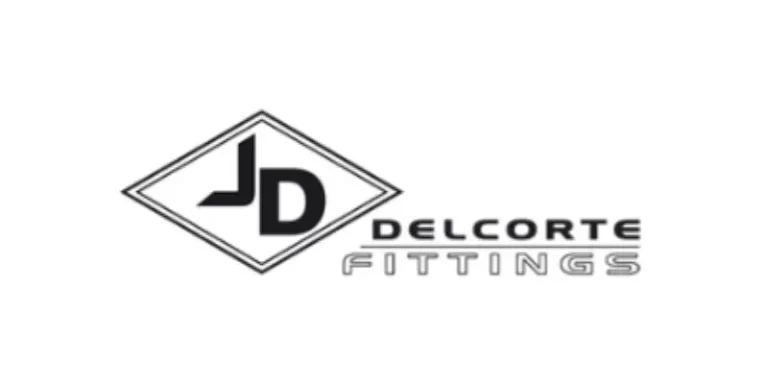
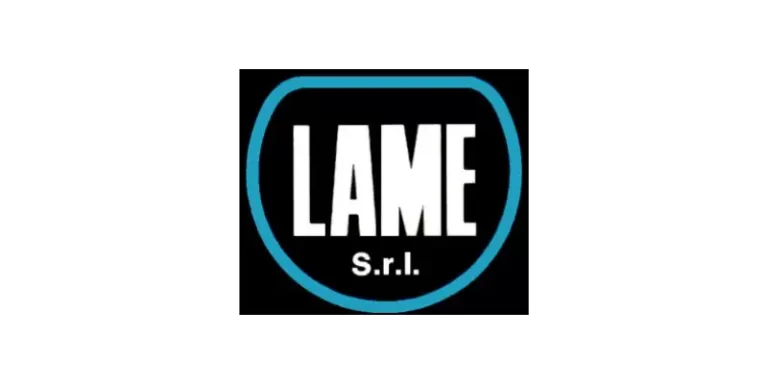
Fill out the form, and our team will get back to you within 24 hours.
Submit Your Inquiry.

